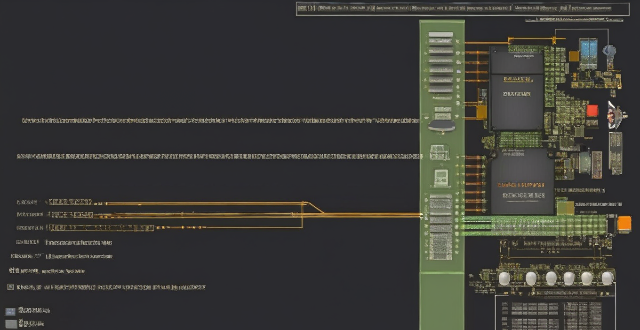In the realm of automotive electronic systems, sensors play a critical role by monitoring various parameters and providing real-time data to the onboard computer system. This data is then used to make informed decisions about the vehicle's operation, ensuring safety, efficiency, and performance. Sensors are integral components of advanced driver-assistance systems (ADAS) that aim to assist drivers and eventually achieve autonomous driving capabilities. The future of automotive electronic systems will see even greater reliance on sensors as vehicles move towards higher levels of automation and connectivity.

The Role of Sensors in Automotive Electronic Systems
In the realm of automotive electronic systems, sensors play a critical role. They are the eyes and ears of the vehicle, constantly monitoring various parameters and providing real-time data to the onboard computer system. This data is then used to make informed decisions about the vehicle's operation, ensuring safety, efficiency, and performance.
Key Functions of Sensors in Automotive Systems
Monitoring Engine Performance
- Temperature Sensors: Detect engine temperature to prevent overheating.
- Oxygen Sensors: Measure oxygen levels in exhaust to optimize fuel combustion.
- Pressure Sensors: Monitor fuel, oil, and air intake pressures for efficient engine function.
Enhancing Vehicle Safety
- Accelerometers: Detect sudden movements or collisions to trigger airbag deployment.
- Wheel Speed Sensors: Provide data for anti-lock braking systems (ABS) and stability control.
- Blind Spot Detection Sensors: Alert drivers to vehicles in their blind spots.
Improving Driving Experience
- Climate Control Sensors: Maintain desired cabin temperature by regulating HVAC systems.
- Parking Sensors: Help drivers park by detecting obstacles around the vehicle.
- Tire Pressure Monitoring Sensors: Continuously monitor tire pressure for safe driving conditions.
Optimizing Fuel Economy
- Mass Airflow Sensors: Measure air entering the engine for better fuel economy.
- Throttle Position Sensors: Monitor throttle position to regulate fuel intake efficiently.
- Emission Control Sensors: Ensure that emissions remain within environmental standards.
Supporting Infotainment Systems
- GPS Sensors: Provide location data for navigation systems.
- Light Sensors: Adjust display brightness based on ambient light levels.
- Audio Sensing Microphones: Enhance voice recognition capabilities for hands-free controls.
---
Integration with Advanced Driver-Assistance Systems (ADAS)
As technology advances, sensors are becoming integral components of ADAS, which aim to assist drivers and eventually achieve autonomous driving capabilities. These systems rely heavily on sensors such as radar, lidar, and cameras to perceive the surroundings and make decisions accordingly.
Examples of ADAS Features Relying on Sensors Include:
- Adaptive Cruise Control: Uses radar to maintain a safe distance from vehicles ahead.
- Lane Keeping Assist: Employs camera sensors to detect lane markings and prevent unintended lane departures.
- Automatic Emergency Braking: Utilizes multiple sensor types to detect potential collisions and apply brakes if necessary.
---
Future Developments
The future of automotive electronic systems will see even greater reliance on sensors as vehicles move towards higher levels of automation and connectivity. With the advent of V2X (Vehicle-to-Everything) communication, sensors will not only collect data from the vehicle itself but also from its surroundings, including other vehicles, infrastructure, and pedestrians.
Upcoming Sensor Technologies in Automotive:
- Solid-State Lidar: Smaller, more affordable lidar sensors for improved object detection.
- High-Resolution Imaging Sensors: Advanced camera systems for better situational awareness.
- Biometric Sensing: Detecting driver fatigue or stress using physiological signals like heart rate or eye movement.
In conclusion, sensors are indispensable components of modern automotive electronic systems, contributing significantly to safety, efficiency, convenience, and entertainment. As technology evolves, so too will the roles and capabilities of these essential devices.